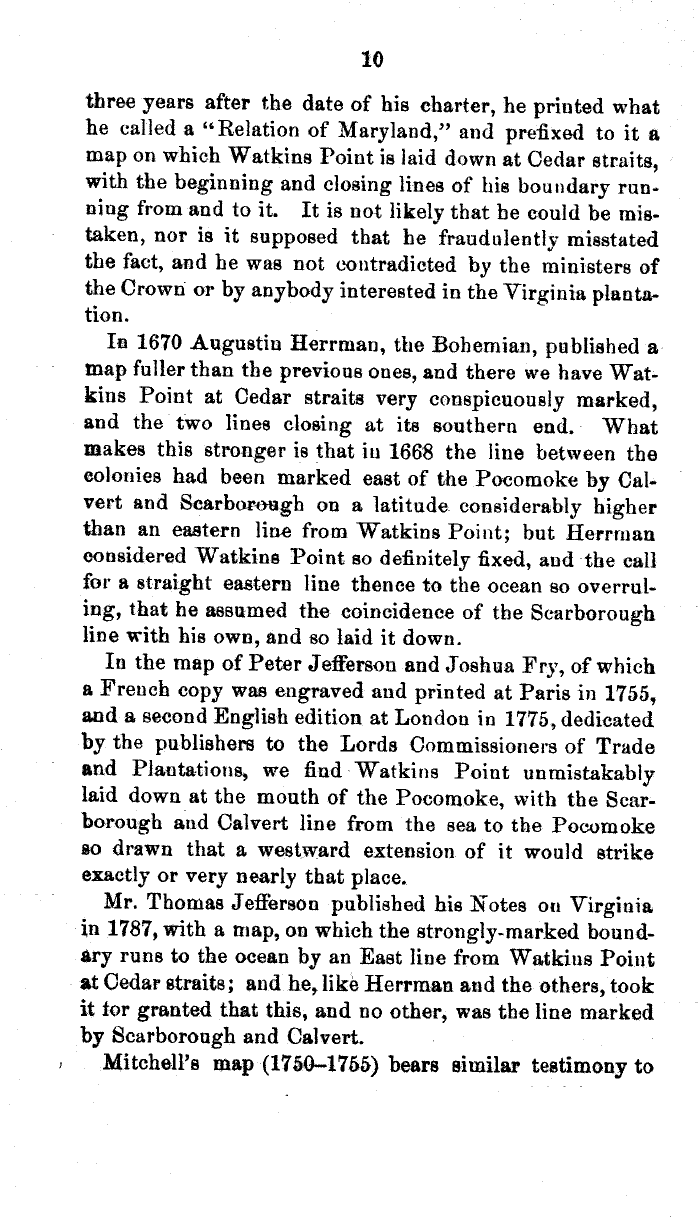| 10
three years after the date of his charter, he printed what
he called a "Relation of Maryland," and prefixed to it a
map on which Watkins Point is laid down at Cedar straits,
with the beginning and closing lines of his boundary run-
ning from and to it. It is not likely that be could be mis-
taken, nor is it supposed that be fraudulently misstated
the fact, and be was not contradicted by the ministers of
the Crown or by anybody interested in the Virginia planta-
tion.
In 1670 Augustin Herrman, the Bohemian, published a
map fuller than the previous ones, and there we have Wat-
kins Point at Cedar straits very conspicuously marked,
and the two lines closing at its southern end. What
makes this stronger is that in 1668 the line between the
colonies had been marked east of the Pocomoke by Cal-
vert and Scarborgh on a latitude- considerably higher
than an eastern line from Watkins Point; but Herrman
considered Watkins Point so definitely fixed, and -the call
for a straight eastern line thence to the ocean so overrul-
ing, that he assumed the coincidence of the Scarborough
line with his own, and so laid it down.
In the map of Peter Jefferson and Joshua Fry, of which
a French copy was engraved and printed at Paris in 1755,
and a second English edition at London in 1775, dedicated
by the publishers to the Lords Commissioners of Trade
and Plantations, we find Watkins Point unmistakably
laid down at the mouth of the Pocomoke, with the Scar-
borough and Calvert line from the sea to the Pocomoke
so drawn that a westward extension of it would strike
exactly or very nearly that place.
Mr. Thomas Jefferson published his Notes on Virginia
in 1787, with a map, on which the strongly-marked bound-
4ry runs to the ocean by an East line from Watkins Point
at Cedar straits; and he, like Herrman and the others, took
it for granted that this, and no other, was the line marked
by Scarborough and Calvert.
Mitchell's map (1750-1755) bears similar testimony to
|

